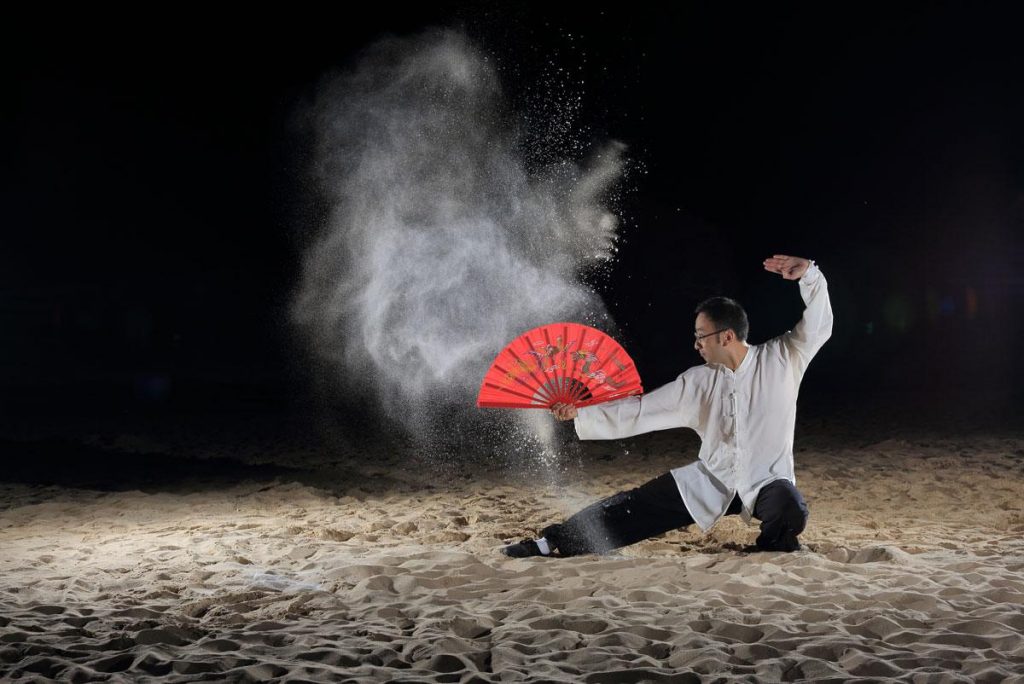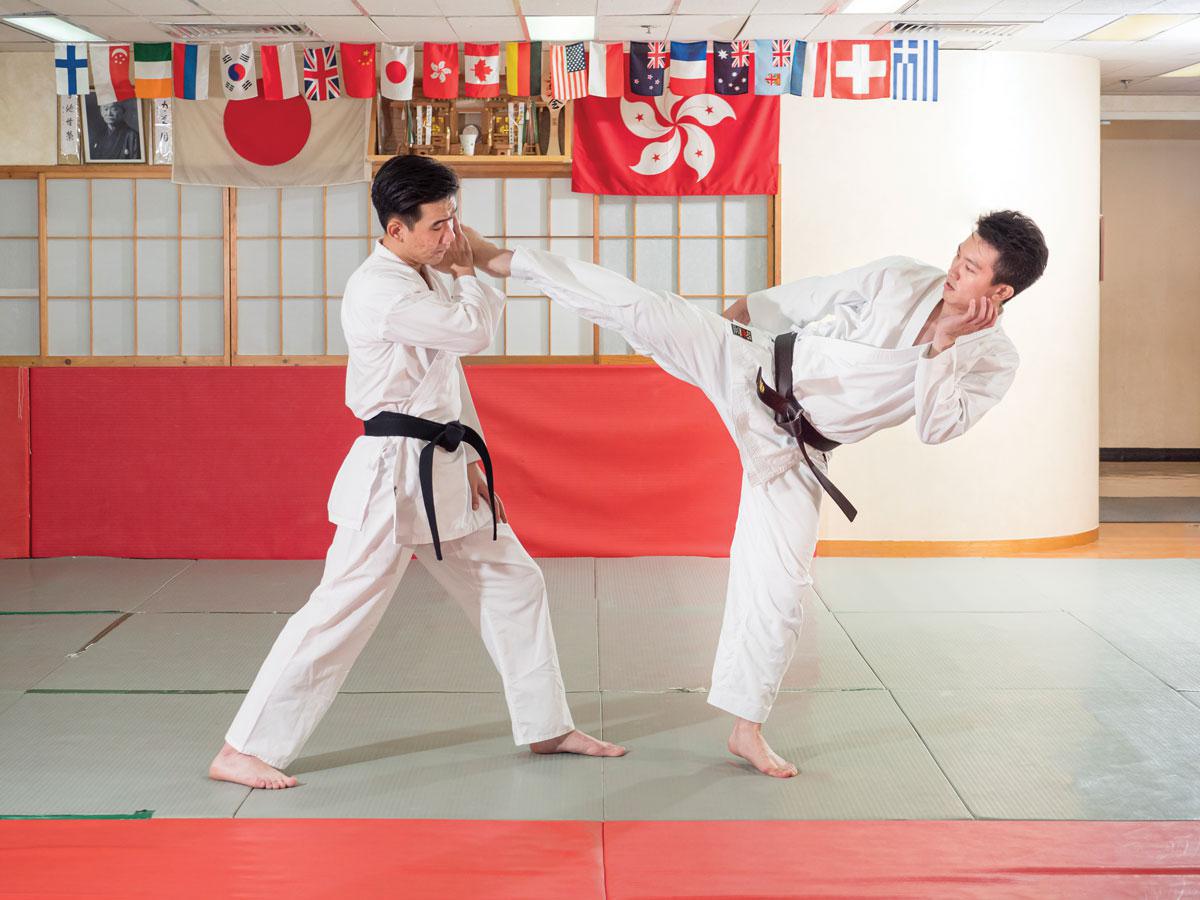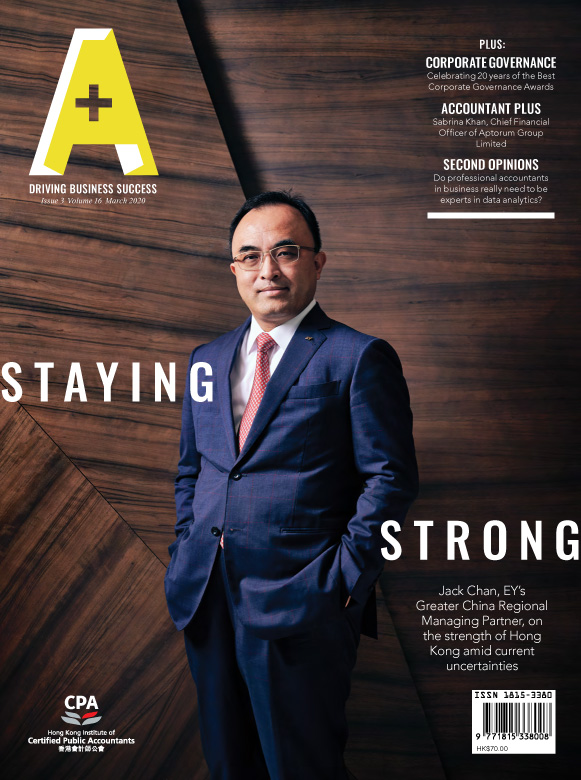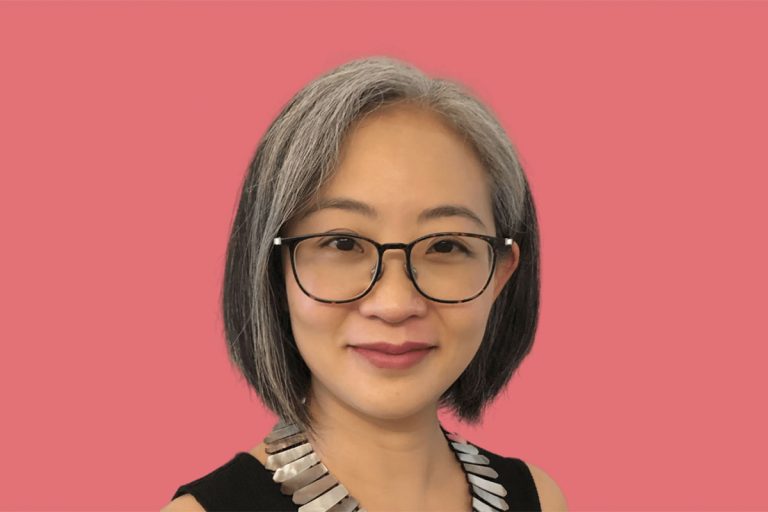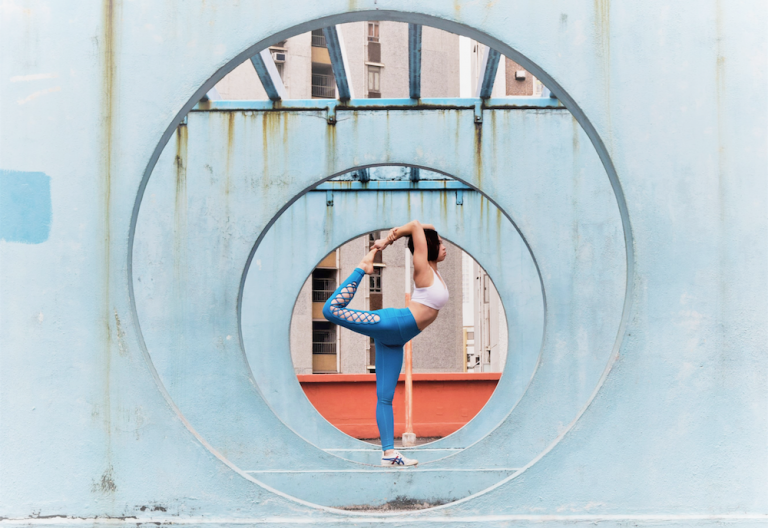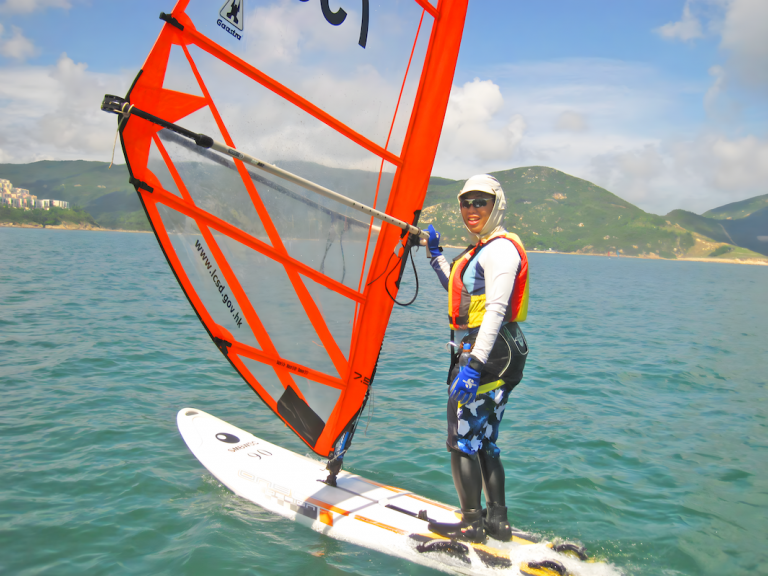David Luk was mesmerized by martial arts films as a child. The electrifying, fast-paced moves of the then 19-year-old Jet Li in the film Shaolin Temple captured his attention the most. “Jet Li’s a real fighter,” says Luk, Asia Financial Controller at TTI, a Berkshire Hathaway Company, and a member of the Hong Kong Institute of CPAs. “As a kid, I loved watching these films despite knowing nothing about martial arts.”
Hong Kong’s fascination with martial arts, especially street fighting, was born in the 1950s, which saw kung fu schools develop their own styles and young fighters taking their bouts to nearby rooftops to avoid getting in trouble with authorities. Martial arts-fighters-turned-film stars such as Jackie Chan, Jet Li, and most notably Bruce Lee, and films such as 1973’s Enter The Dragon, 1978’s Drunken Master and 1982’s Shaolin Temple inspired cult followings and further drove Hong Kong’s martial arts scene. Now, the city boasts training schools that teach various types of martial arts, including muay thai, wing chun, karate, judo, taekwondo and Brazilian jiu-jitsu. Luk does wushu, also known as Chinese kung fu. He was deeply inspired by Jet Li’s agile wushu moves.
But, as he notes, it didn’t start with wushu. Luk signed himself up for tai chi classes at his apartment’s clubhouse, almost a decade ago. Eager to get more exercise, he began attending training sessions twice a week and quickly realized how doing tai chi helped to improve his breathing, balance and increase the strength in his legs. “When I first started, I felt I wasn’t that good,” says Luk. Eager to keep up with the class, he started teaching himself the different forms of tai chi, such as Chen-style, Ng-style and Yang-style, by watching tai chi videos on YouTube. “I observed how different masters demonstrated the same forms. It was a great way to learn,” Luk says.
David Luk , Asia Financial Controller at TTI, practicing wushu at Shek O Beach
The class instructor took note of Luk’s rapid improvement and, after three months, invited him to try out the more physically intense martial art of wushu. He began learning the basics of the sport with his instructor. The more Luk practiced, the more he grew interested in it. He soon wanted to become a certified wushu trainer, and enrolled himself into a master training programme at the Hong Kong Wushu Union, where he faced his first challenge as a beginner. “When I first started attending classes, we were expected to learn and master 10 different styles of wushu within three months,” Luk says. “The spirit and atmosphere of each class was amazing. There were about 30 people and I would practice the forms with other students.”
Luk spent the next few months practicing moves such as nan quan, or “Southern Fist” which focuses on short and powerful movements, chang quan, or “Long Fist” which originated in Northern China, and routines utilizing spears and swords known as qiangshu and daoshu. “There are many types of wushu, but they all share some common traits,” he explains, adding how there is more than one way to block the same incoming attack, such as a punch directed at one’s arm. By completing physical training courses and passing examinations, as well as a course on mentoring students, he finished the training programme in a year.
Now a qualified wushu master as well as a registered referee at the Hong Kong Wushu Union, the activity plays a more vital role in Luk’s fitness routine – but he hasn’t forgotten his tai chi roots. In addition to practicing wushu on the weekends, he makes time for daily tai chi routines. “I used to do tai chi around four times every week. Now I spend 30 minutes practicing it every day,” he says.
“I hope to help more people, including fellow CPAs, to improve their mental and physical health through martial arts.”
He has also started teaching it at work by including tai chi drills into the company’s weekly fitness class, which many colleagues enjoyed. “They were very eager to learn more,” he says. So much so that Luk began hosting tai chi classes each week after work. Luk and seven other colleagues gave a tai chi demonstration during the company’s annual dinner, which, as Luk fondly remembers, was met with jubilant cheers from the audience. “Though I only taught them once a week, they learned quite fast,” he says. “And they were very satisfied after giving that performance.”
Luk says he has also started learning wing chun and boxing, and hopes to continue coaching. “I hope to help more people, including fellow CPAs, to improve their mental and physical health through martial arts,” he says. “I feel that determination, compassion and the willingness to share is instrumental in realizing the spirit of wushu.”
Kickstarting new techniques
Preston Wong will never forget the moment of intrigue he felt as an eight-year-old kid after catching a brief glimpse of karate fighters in action. “One summer holiday, I was walking around Causeway Bay with my parents, when I noticed an ongoing karate class,” recounts Wong, Manager, Audit at Grant Thornton and an Institute member. After pleading with his parents to visit the venue, they agreed to bring him in. It was Wong’s first time in a dojo, a Japanese martial arts practice room, and one in which he would eventually grow up training in. “I saw many students practicing kicks and punches, which I thought was very interesting. So my parents signed me up for a trial lesson.”
With all the instructors of that particular dojo from Japan, Wong says his first class didn’t quite go as expected. “The whole lesson was mainly in Japanese – not only was I learning new moves, but I had to learn the names of those moves in Japanese,” he says. By mimicking the other students each time he was commanded in Japanese, he eventually memorized the name for each move. He spent the next seven years training twice a week to master the fundamental moves or kihon to pass examinations in order to climb the ranks – from white belt all the way to black belt.
Becoming a black belt karate fighter, or senpai, in his mid-teens was a huge achievement for Wong. “I was very happy that day. I felt like I had accomplished something – it made me want to learn even more,” he says. “The journey of karate truly begins after one receives their black belt.” Today, Wong is a second-degree black belt karate fighter and still trains in the same dojo he set foot in almost 20 years ago.
“We need to connect all the different moves, so I always find myself asking what the next move is, or when and how to turn.”
The most challenging aspect is learning and memorizing kata, or movement patterns. Basic patterns can comprise of 20 moves, and more advanced ones can include upwards of 60, and there are more than 100 different kata in karate. They all involve stepping and turning, which a fighter must memorize and perfect. “Kata is the essence of karate,” says Wong. “There are also elbow-breaking moves, sweeps, takedowns and trapping techniques to stop your opponent from escaping.” Wong says a single kata could be a three-minute long sequence. “We need to connect all the different moves, so I always find myself asking what the next move is, or when and how to turn.”
Another important aspect of karate is kumite, or sparring, where fighters rely on their knowledge of kihon and kata when facing opponents. “All kata moves are applicable in combat situations, so we need to understand the reasons behind each move as well as when and how to apply them,” Wong says.
Bouts between fighters are points-based, and competitors aim to score as many points as quickly – and safely – as possible. “There are rules within kumite that make it quite safe,” Wong explains. Four judges at each side of the ring closely watch fighters at all times. “A punch to the stomach or head earns you one point, while a kick to the head is three points.” But contenders do not spar with the aim of injuring their opponent. “If the judges see you punching or kicking too hard, they issue you a warning, and injuring an opponent can result in disqualification.”
This notion of controlled combat took some getting used to for Wong, especially as he also practices muay thai. He was introduced to the sport in 2017 by a colleague and now trains on his own. Even with almost 20 years of experience in karate, learning muay thai presented new challenges. “During the first few classes, the instructors noticed my stance and technique and realized that I’d done martial arts before,” he remembers. “But they still said I had a lot to learn.” Since starting, he says his kicking technique has remarkably improved. “The sport stresses powerful punches and kicks. I learned how to move my arms and waist in order to pivot and put more force into a kick,” Wong says. “The technique changed the way I approach kicks, even in karate.”
Juggling his busy work schedule with muay thai training once a week and karate twice a week, Wong recognizes the benefits of making time for both. “After an intense muay thai or karate session, I definitely approach work with a clearer mind. It allows me to focus.”
He looks forward to taking part in more karate competitions this year and also improving in muay thai. “I’m happy that I’m learning two kinds of martial arts that are almost completely different. I’m able to combine techniques from both into my training,” he says. “Now I know what to improve on in order to progress further in my journey in both.”
High crime rate and limited police manpower in Hong Kong during the early 20th century prompted people to learn self-defence techniques from Mainland Chinese immigrants, many of whom were prominent martial artists. Muay thai boxing was also introduced to Hong Kong in the 1960s by returning immigrants from Thailand. As a result, over 400 martial arts schools were established in Hong Kong during the 1960s and 1970s.






